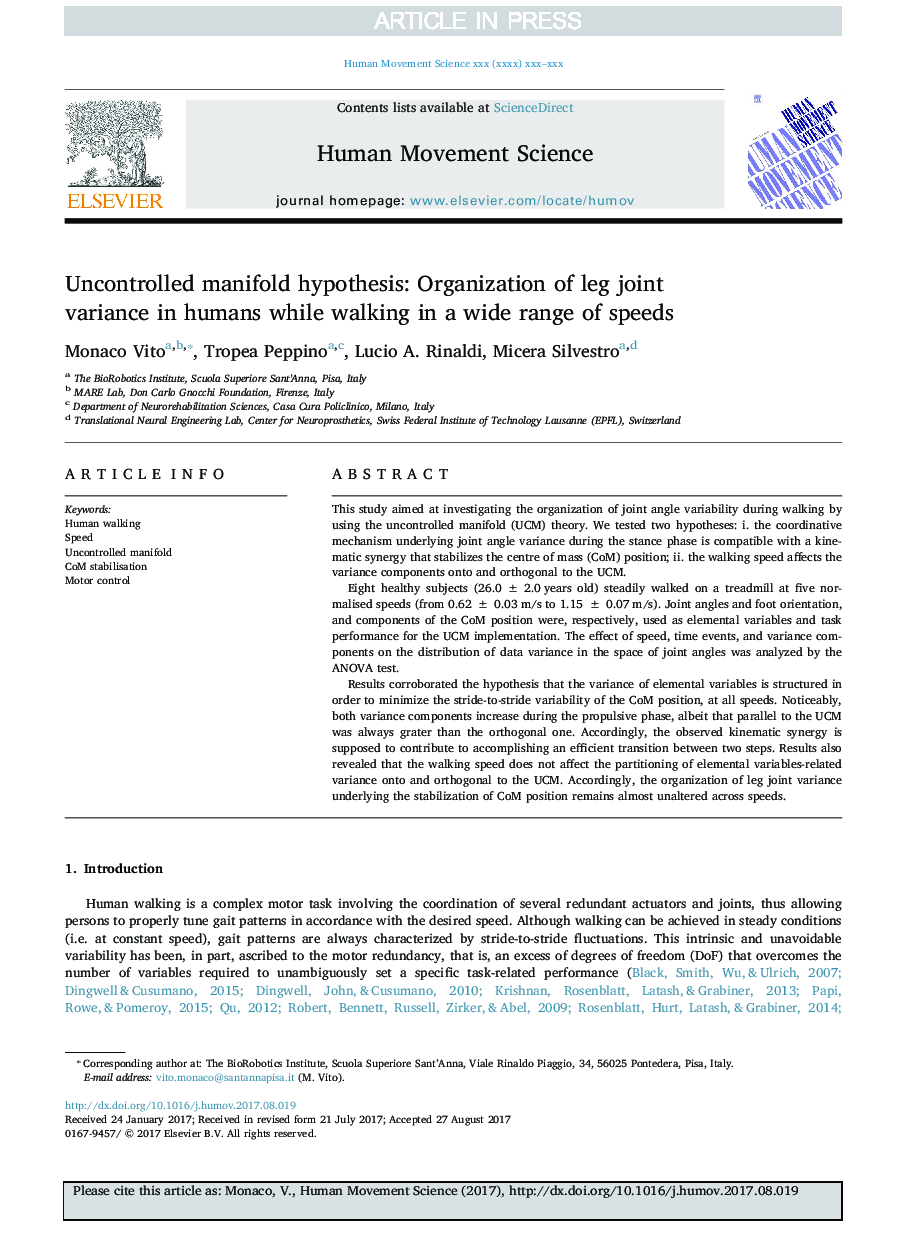| Article ID | Journal | Published Year | Pages | File Type |
|---|---|---|---|---|
| 7291013 | Human Movement Science | 2018 | 9 Pages |
Abstract
Results corroborated the hypothesis that the variance of elemental variables is structured in order to minimize the stride-to-stride variability of the CoM position, at all speeds. Noticeably, both variance components increase during the propulsive phase, albeit that parallel to the UCM was always grater than the orthogonal one. Accordingly, the observed kinematic synergy is supposed to contribute to accomplishing an efficient transition between two steps. Results also revealed that the walking speed does not affect the partitioning of elemental variables-related variance onto and orthogonal to the UCM. Accordingly, the organization of leg joint variance underlying the stabilization of CoM position remains almost unaltered across speeds.
Related Topics
Life Sciences
Neuroscience
Cognitive Neuroscience
Authors
Vito Monaco, Peppino Tropea, Lucio A. Rinaldi, Silvestro Micera,
